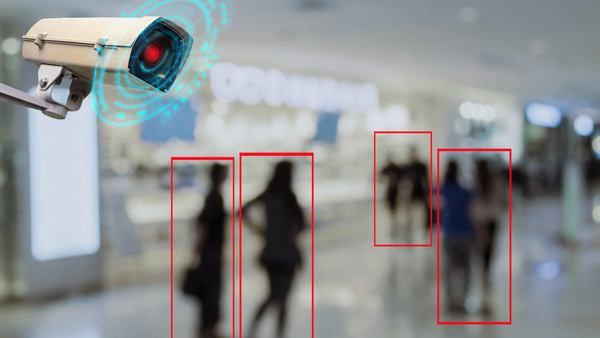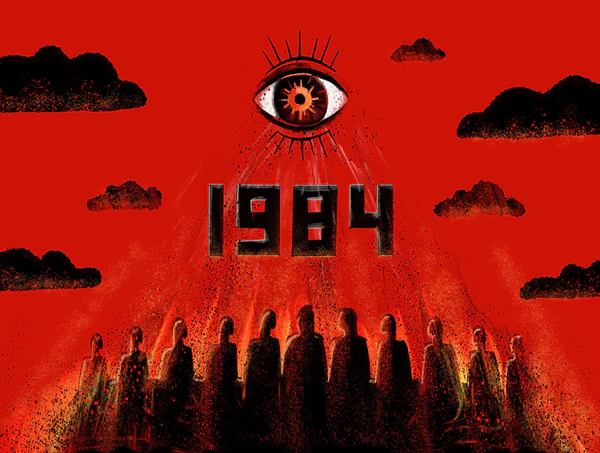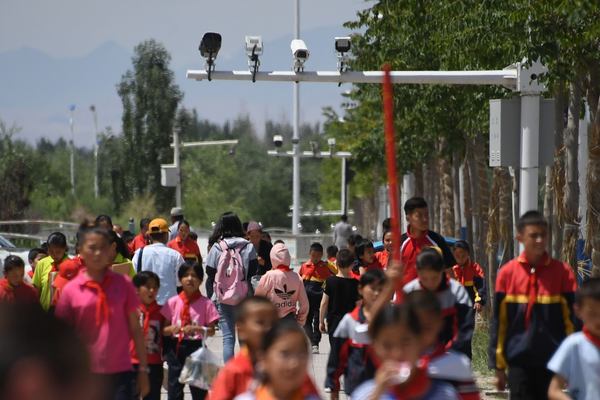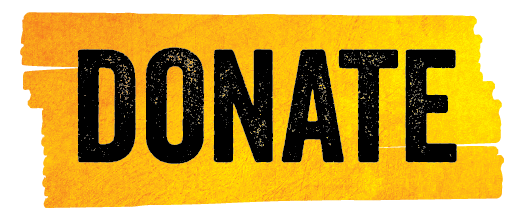In Ukraine, deputies are preparing to adopt bill No. 11031 “On a unified system of video monitoring of the state of public security.”
The initiative, backed by the Home Office, is designed to create a comprehensive surveillance system reminiscent of the total control described in George Orwell's novel 1984.
The system not only raises questions about respect for human rights, but also threatens the foundations of democracy and the privacy of citizens. The authors of the document propose not only to observe the public, but also to identify people in the video.
In other words, we are talking about the fact that modern cameras will be equipped with facial recognition functions. With the help of technology such as Clearview, law enforcement will be able to quickly find faces using existing videos or photographs.
This program uses powerful neural networks to analyze images and identify people, which allows you not only to monitor them, but also significantly improves the efficiency of crime investigations. This approach to video surveillance is being increasingly adopted, particularly to identify people wearing masks and in various urban environments.
According to the project, every resident of Ukraine will be identified as an “information object” or “individual” by creating and using digital dossiers that will contain a variety of information about the individual. This may include residence data, biometric data, criminal history, financial information and even behavioral characteristics. Here's how it might work in practice:
- Data collection. All citizens can be entered into a single database where their personal data will be collected. This can happen through government agencies, banks, medical institutions and other organizations.
- Identification. Facial recognition technologies, QR codes or other biometric methods can be used to identify individuals in real time. For example, when going through security, facial scanners can be used, which are quickly compared to a database.
- Gaining access. Citizens can access government services or financial institutions using their digital profiles, which will simplify procedures and reduce paperwork time.
- Monitoring and control. By having clear information about each individual, authorities can monitor citizens' behavior, movements and actions, which can be used for both security and population control.
- Privacy and security. An important aspect will be ensuring the protection of personal data. Mechanisms will need to be put in place to control access to information and prevent its misuse.
This approach can be used not only to ensure security, but also to build more efficient management systems and service delivery. However, its implementation raises ethical and legal issues related to the protection of human rights and privacy.

Authorities simply seek easy and unfettered access to citizen profiles related to their identification. This approach calls into question compliance with the principles of the GDPR, since it interferes with a person's privacy without sufficient justification.
Recent reports suggest that government interest in such access may be linked to a desire for control and monitoring. However, this raises concerns about the possibility of mass surveillance and misuse of personal data, which goes against privacy standards.
Draft No. 11031 states that the objects of video monitoring in accordance with this law are:
- individuals and vehicles;
- public places;
- parks, recreational areas, gardens, squares and playgrounds;
- monuments of cultural and historical heritage;
- streets, roads, alleys, pedestrian and bicycle paths;
- car parks and areas for parking vehicles;
- other public areas;
- urban infrastructure facilities (social, engineering and transport);
- traffic management equipment;
- buildings, structures in which state authorities or local governments, enterprises, institutions and organizations of state and municipal ownership are located;
- territories, buildings, structures of educational, health care institutions and premises in them;
- objects of increased danger;
- things and objects.
Words about total video surveillance are not an exaggeration. The government is actively developing and implementing systems that allow for constant monitoring of citizens. For example, the first purpose of a new video surveillance system may be to identify evaders, which indicates an attempt to control the population under various pretexts. As noted in recent publications, the capabilities of video surveillance, particularly in the context of new technologies, are leading to a situation where everyone, everywhere can actually be monitored.
Cybersecurity expert Konstantin Korsun illustrates the opportunities that such a law would provide to government officials:
“That is, this is the next step in building the Chinese model of population control.
At first, nothing seemed to arouse suspicion: a convenient passport card (though the registration address is on A4 paper), convenient Diya, convenient ReserveKhrestik, high-quality digital photos in databases, and then the next step, and here it is.
Comrade Major sits in a comfortable chair with coffee and sees that the conditional Korsun has left the house and headed to the pharmacy. Yeah, are you sick? Well, let's look at the medical database and see what he has there. Then I went to the Central Administrative Service - yeah, we look at the Central Administrative Service database. Do you want to get a foreign passport or escape abroad?
We immediately add a “keep out” mark to the border database, under any pretext. Then I went down to the metro - we look at the cameras where I went. Which station did you get off at, who did you meet? There is also complete information about the interlocutor on the screen. Did you go to the cafe? Great, there are also cameras, even with sound. Isn’t a conspiracy being prepared over coffee? Did you cross the road in the wrong place? Did you throw trash in the wrong place?
We record everything on video. And so on along the entire route until the “object” returns home - chicandos. There is no need for any proceedings or court orders - maximum information with a minimum of effort. And there are cameras in stores, shopping centers, parking lots, roads, streets, parks, office buildings, public places, and many more places. Everyone’s full life history is recorded automatically in government “clouds.”
Some may think that this is too pessimistic, but in our opinion the expert is not far from the truth. In our conditions, it could be even worse - when this data is sold to criminals, or raiders, for example.
"1984": lessons from dystopia
The novel 1984 describes a world where the state controls every aspect of citizens' lives. It features the concept of "Big Brother" who tirelessly watches people, forcing them to self-govern through fear. Every line, every gesture and even thought becomes the subject of surveillance. There is no privacy in this system, and citizens are persecuted for the slightest violations of behavior.

The idea of the Ukrainian bill is reminiscent of this dystopia. A surveillance system that would cover the entire country could lead to the transformation of society into a constantly monitored mass, where criticism of the authorities would be drowned out and dissent exterminated.
Total surveillance in China: lessons from modern times

China is known for its harsh control policies, particularly towards the Uyghurs in Xinjiang. Political repression, mass surveillance, and the use of technology to monitor and analyze behavior became the basis of “social credit.” The authorities exercise systematic control over the Uyghur population, demanding compliance with standards determined by the Communist Party. The system includes video surveillance, biometric data, and communications analysis.
This reminds us of the danger that the Ukrainian bill brings. If total video surveillance is introduced in Ukraine, the system could also become a tool for persecuting the opposition, journalists and activists who raise their voices about the shortcomings of the government.
Privacy vs. safety
One of the biggest dangers of introducing such legislation is the threat to the privacy of citizens. Declarations of safety are often used as justification for destroying personal space. People begin to feel pressure and fear of reprisals for actions that were previously considered normal.
Article 32 of the Constitution of Ukraine states that “everyone has the right to privacy.” However, with the adoption of such a law, this right may be grossly violated, because personal life will become open to government surveillance. Video cameras on the streets, on roads, in public transport will take up space near every citizen, and the intimacy of interactions will be destroyed.
In addition, such video surveillance systems can be used for undue influence or data manipulation. Authorities can abuse their position and use the information collected for political pressure.
Examples from other countries
Countries that have already taken similar measures, such as the UK or Russia, demonstrate the consequences of total surveillance. In the UK in particular, surveillance is carried out with numerous cameras in public places, but this has not led to an improvement in the overall security situation. Instead, a culture of insecurity and suspicion emerged, leading to excessive police deployment on the streets.
In Russia, video surveillance has become a tool of political control, leading to the persecution of oppositionists and activists. Wrongful arrests and unlawful surveillance became commonplace during this time. A striking example is the decision of the European Court of Human Rights of July 4, 2023, adopted in the case of GLUKHIN v. Russia (No. 11519/20).
This decision, adopted by the Chamber of the Court, describes Russia's violation of its international obligations. This case concerned the Putin regime's use of facial recognition technology against citizen Glukhin after he held a one-man picket in the Moscow metro. He was identified and later found using facial recognition technology.
The ECtHR concluded that the use of real-time facial recognition technology without the application of appropriate legally defined procedural guarantees and supervisory control mechanisms constitutes a violation of the requirements of Article 8 of the Convention for the Protection of Human Rights and Fundamental Freedoms. The Ukrainian Ministry of Internal Affairs, supported by the authorities, actually cosplays Russian laws, which may prompt citizens to file the same lawsuits in European courts.
***
The introduction of a total video surveillance system in Ukraine is not only a direct path to the destruction of personal life, but also a threat to democratic values. If we, as a society, allow our rights and freedoms to be limited based on an illusion of security, the consequences could be catastrophic. The adoption of bill No. 11031 could lead to the disappearance of privacy and the persecution of any manifestations of dissent. In order to avoid the “1984” scenario, society must become active and prevent the creation of the Big Brother system in Ukraine.




